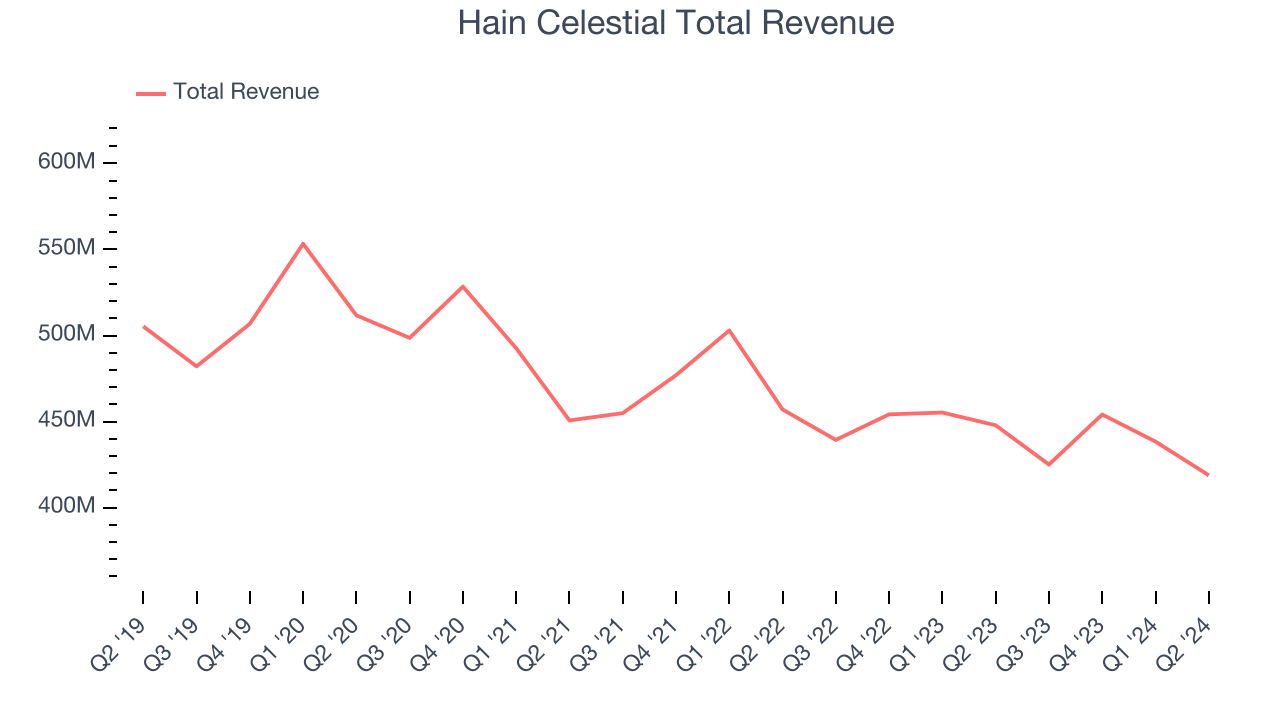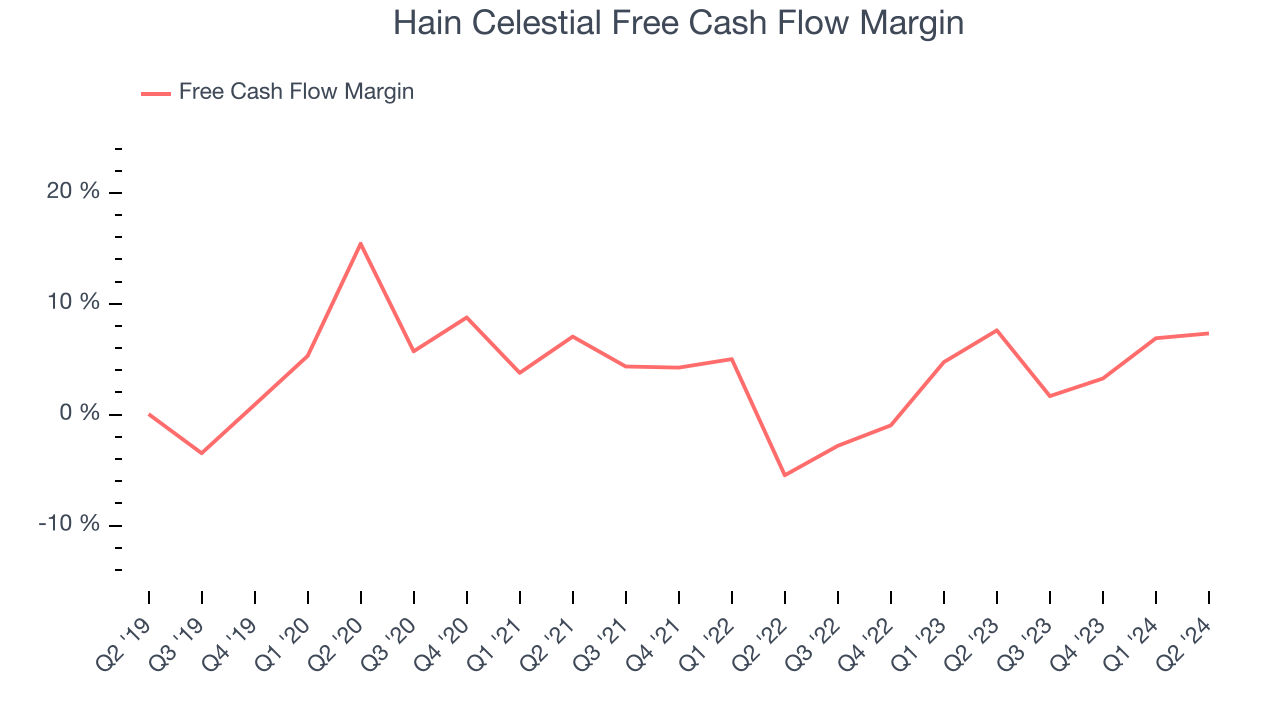Natural food company Hain Celestial (NASDAQ:HAIN) reported results in line with analysts’ expectations in Q2 CY2024, with revenue down 6.5% year on year to $418.8 million. It made a non-GAAP profit of $0.13 per share, improving from its profit of $0.11 per share in the same quarter last year.
Is now the time to buy Hain Celestial? Find out by accessing our full research report, it’s free.
Hain Celestial (HAIN) Q2 CY2024 Highlights:
- Revenue: $418.8 million vs analyst estimates of $419.4 million (small miss)
- EPS (non-GAAP): $0.13 vs analyst estimates of $0.08 ($0.05 beat)
- Gross Margin (GAAP): 23.4%, in line with the same quarter last year
- EBITDA Margin: 9.4%, in line with the same quarter last year
- Free Cash Flow Margin: 7.3%, similar to the same quarter last year
- Organic Revenue was down 4% year on year
- Market Capitalization: $613.6 million
“Fiscal 2024 was the foundational year of our Hain Reimagined strategy, during which we made substantial progress in simplifying our business and generating fuel. We transitioned to a global operating model, reducing geographic complexity and driving scale, and developed a performance-driven, values-based culture,” said Wendy Davidson, President and CEO.
Sold in over 75 countries around the world, Hain Celestial (NASDAQ:HAIN) is a natural and organic food company whose products range from snacks to teas to baby food.
Shelf-Stable Food
As America industrialized and moved away from an agricultural economy, people faced more demands on their time. Packaged foods emerged as a solution offering convenience to the evolving American family, whether it be canned goods or snacks. Today, Americans seek brands that are high in quality, reliable, and reasonably priced. Furthermore, there's a growing emphasis on health-conscious and sustainable food options. Packaged food stocks are considered resilient investments. People always need to eat, so these companies can enjoy consistent demand as long as they stay on top of changing consumer preferences. The industry spans from multinational corporations to smaller specialized firms and is subject to food safety and labeling regulations.
Sales Growth
Hain Celestial is a small consumer staples company, which sometimes brings disadvantages compared to larger competitors benefitting from better brand awareness and economies of scale.
As you can see below, the company’s revenue has declined over the last three years, dropping 4.1% annually. This is among the worst in the consumer staples industry, where demand is typically stable.

This quarter, Hain Celestial missed Wall Street’s estimates and reported a rather uninspiring 6.5% year-on-year revenue decline, generating $418.8 million in revenue. Looking ahead, Wall Street expects sales to grow 1.4% over the next 12 months, an acceleration from this quarter.
When a company has more cash than it knows what to do with, buying back its own shares can make a lot of sense–as long as the price is right. Luckily, we’ve found one, a low-priced stock that is gushing free cash flow AND buying back shares. Click here to claim your Special Free Report on a fallen angel growth story that is already recovering from a setback.
Cash Is King
If you’ve followed StockStory for a while, you know we emphasize free cash flow. Why, you ask? We believe that in the end, cash is king, and you can’t use accounting profits to pay the bills.
Hain Celestial has shown mediocre cash profitability over the last two years, giving the company limited opportunities to return capital to shareholders. Its free cash flow margin averaged 3.4%, subpar for a consumer staples business.
Taking a step back, an encouraging sign is that Hain Celestial’s margin expanded by 2.6 percentage points during that time. The company’s improvement shows it’s heading in the right direction, and because its free cash flow profitability rose more than its operating profitability, continued increases could signal it’s becoming a less capital-intensive business.

Hain Celestial’s free cash flow clocked in at $30.7 million in Q2, equivalent to a 7.3% margin. This quarter’s cash profitability was in line with the comparable period last year and above its two-year average.
Key Takeaways from Hain Celestial’s Q2 Results
We were impressed by how significantly Hain Celestial blew past analysts’ EPS expectations this quarter. We were also excited its organic revenue growth outperformed Wall Street’s estimates. Zooming out, we think this quarter featured some important positives. The stock traded up 2.3% to $7 immediately after reporting.
Hain Celestial may have had a good quarter, but does that mean you should invest right now? When making that decision, it’s important to consider its valuation, business qualities, as well as what has happened in the latest quarter. We cover that in our actionable full research report which you can read here, it’s free.
